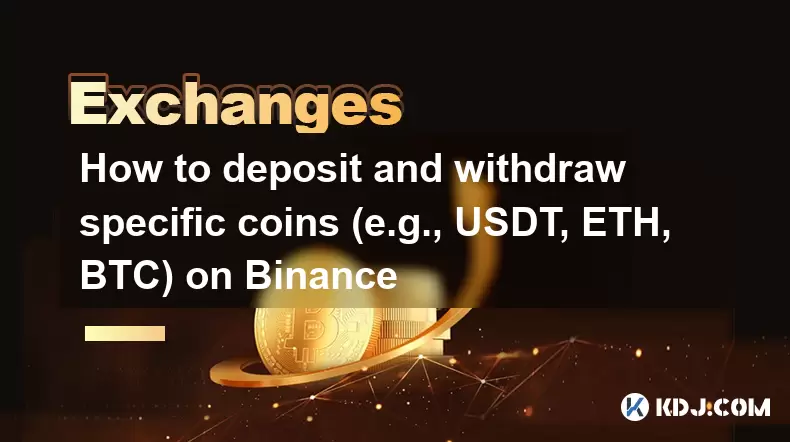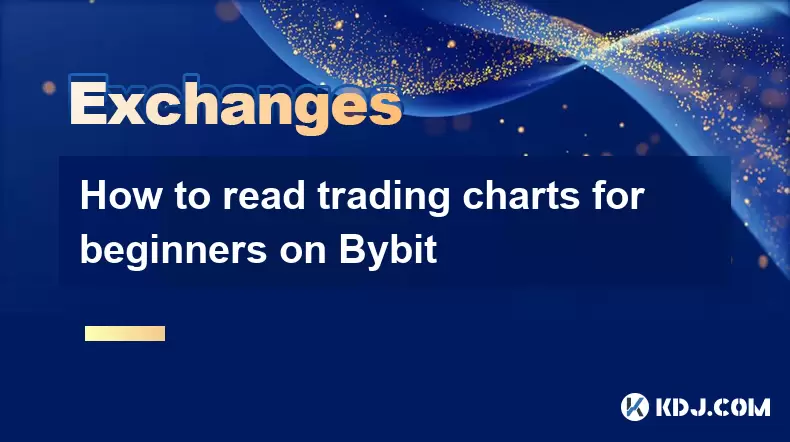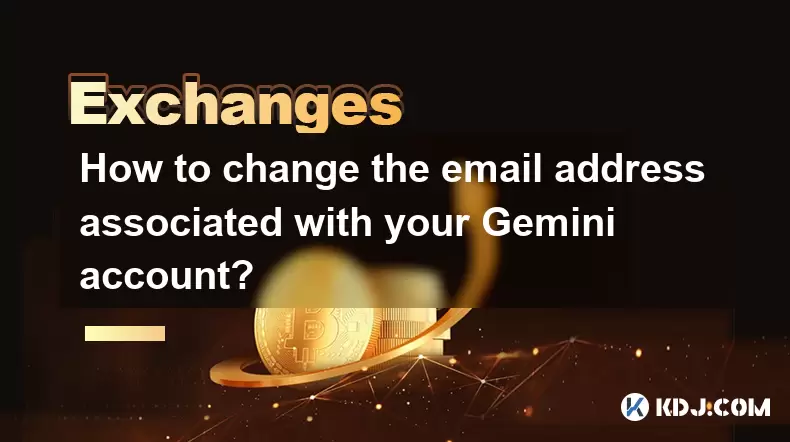-
 Bitcoin
Bitcoin $115100
1.27% -
 Ethereum
Ethereum $3675
2.71% -
 XRP
XRP $2.995
1.45% -
 Tether USDt
Tether USDt $1.000
0.02% -
 BNB
BNB $769.8
2.64% -
 Solana
Solana $168.0
3.25% -
 USDC
USDC $0.9999
-0.01% -
 TRON
TRON $0.3371
1.48% -
 Dogecoin
Dogecoin $0.2051
3.36% -
 Cardano
Cardano $0.7394
2.30% -
 Hyperliquid
Hyperliquid $38.15
0.42% -
 Stellar
Stellar $0.3966
-0.36% -
 Sui
Sui $3.486
2.93% -
 Chainlink
Chainlink $16.72
2.52% -
 Bitcoin Cash
Bitcoin Cash $568.0
4.36% -
 Hedera
Hedera $0.2440
2.59% -
 Ethena USDe
Ethena USDe $1.001
0.04% -
 Avalanche
Avalanche $22.16
2.06% -
 Litecoin
Litecoin $119.1
-0.73% -
 UNUS SED LEO
UNUS SED LEO $8.991
0.04% -
 Toncoin
Toncoin $3.232
-0.39% -
 Shiba Inu
Shiba Inu $0.00001233
2.82% -
 Uniswap
Uniswap $9.717
2.53% -
 Polkadot
Polkadot $3.664
1.85% -
 Dai
Dai $1.000
0.01% -
 Monero
Monero $281.2
-3.89% -
 Bitget Token
Bitget Token $4.350
1.55% -
 Cronos
Cronos $0.1428
5.07% -
 Pepe
Pepe $0.00001050
3.68% -
 Aave
Aave $262.3
3.54%
How to deposit and withdraw specific coins (e.g., USDT, ETH, BTC) on Binance
Always verify the correct blockchain network when depositing or withdrawing crypto on Binance—sending funds via the wrong network (e.g., ERC20 to BEP20) can result in permanent loss.
Aug 06, 2025 at 10:29 pm

Understanding Binance Deposit and Withdrawal Basics
Before initiating any deposit or withdrawal on Binance, users must ensure their account is fully verified. Binance requires KYC (Know Your Customer) verification for most operations, especially withdrawals. Without completing identity verification, you may face limits or restrictions. Once verified, access the "Wallet" section from the top navigation bar. Here, you'll find options such as Spot Wallet, Fiat and Spot, and Withdraw. The Spot Wallet is where most trading and storage of cryptocurrencies like USDT, ETH, and BTC occur.
It's crucial to understand the difference between depositing and withdrawing. Depositing means sending crypto from an external wallet or exchange into your Binance account. Withdrawing means transferring crypto from your Binance account to an external destination. Each coin operates on specific blockchain networks, and selecting the wrong network can result in permanent loss of funds.
How to Deposit USDT on Binance
To deposit USDT (Tether) into your Binance account, follow these steps:
- Log in to your Binance account and hover over "Wallet", then click "Spot Wallet".
- Click "Deposit" next to the USDT listing.
- A pop-up will appear showing your USDT deposit address and a list of supported networks such as ERC20 (Ethereum), BEP20 (Binance Smart Chain), TRC20 (Tron), and others.
- Choose the network that matches the wallet you're sending from. For example, if you're sending from a MetaMask wallet, use ERC20.
- Copy the deposit address or scan the QR code.
- Go to your external wallet, paste the address, select the correct network, enter the amount, and confirm the transaction.
Always double-check the network. Sending USDT via ERC20 to a BEP20-only address will result in loss. Binance displays warnings, but the responsibility lies with the user. After confirmation, the deposit usually appears within minutes, depending on network congestion.
How to Deposit ETH on Binance
Depositing ETH (Ethereum) is simpler due to fewer network options:
- Navigate to "Wallet" > "Spot Wallet" > "Deposit".
- Search for ETH and select it.
- Binance will display a deposit address. ETH primarily uses the ERC20 network, which is the standard Ethereum blockchain.
- Copy the address or scan the QR code.
- From your external wallet (e.g., MetaMask, Trust Wallet), send ETH to this address using the Ethereum network.
- Confirm the transaction and wait for blockchain confirmation.
ETH deposits typically take 1 to 5 confirmations on the Ethereum network, which may take several minutes during peak times. Ensure your external wallet has enough ETH for gas fees, as insufficient gas will cause the transaction to fail.
How to Deposit BTC on Binance
Bitcoin (BTC) deposits require attention to network compatibility:
- Go to "Wallet" > "Spot Wallet" > "Deposit".
- Find BTC and click "Deposit".
- Binance provides a BTC deposit address. Bitcoin primarily uses the Bitcoin network (BTC), but Binance also supports BEP20 (BTCB) and Litecoin (LTC) for wrapped versions.
- Ensure you're sending native BTC via the Bitcoin network.
- Copy the address or scan the QR.
- In your sending wallet, select Bitcoin (BTC), paste the address, enter the amount, and pay the network fee.
Bitcoin transactions may take longer due to block confirmation times. Binance usually requires 1 confirmation for deposit crediting. Avoid using SegWit or Bech32 addresses unless explicitly supported—Binance accepts them, but mixing formats can confuse beginners.
Withdrawing USDT, ETH, and BTC from Binance
To withdraw any cryptocurrency from Binance:
- Click "Wallet" > "Spot Wallet" > "Withdraw".
- Select the coin you wish to withdraw—USDT, ETH, or BTC.
- Enter the destination address. This must be a valid address on the correct network.
- Choose the network. For USDT, options include TRC20, ERC20, BEP20. For ETH, only ERC20 is available. For BTC, use BTC network.
- Enter the amount. Binance will display the network fee.
- Confirm the withdrawal via email and 2FA (Google Authenticator or SMS).
For USDT, selecting TRC20 often results in lower fees. However, ensure the receiving wallet supports TRC20. Withdrawing to an exchange that doesn’t support the selected network will result in loss. Always send a small test transaction first.
Security Measures and Best Practices
Binance implements multiple security layers for withdrawals. Users must enable 2FA (Two-Factor Authentication). Withdrawals to new addresses require email confirmation and 2FA verification. Binance may also impose withdrawal limits based on account level.
Never share your API keys, 2FA codes, or recovery phrases. Phishing sites often mimic Binance’s interface. Always verify the URL is binance.com. Use whitelisted addresses under "Withdrawal Address Management" to restrict withdrawals to pre-approved destinations.
Enable anti-phishing codes in your Binance security settings. This adds a personalized message to all official Binance emails, helping identify fake communications.
Frequently Asked Questions
Can I deposit USDT from a different network than the one I originally used?
Yes. Binance supports multiple networks for USDT. You can deposit USDT via ERC20, BEP20, or TRC20 regardless of past deposits. Just ensure the sending and receiving networks match each time.
What happens if I withdraw BTC to a BEP20 address?
Withdrawing native BTC to a BEP20 (BNB Smart Chain) address will result in complete loss of funds. BEP20 BTC refers to BTCB, a wrapped token. Never send BTC to a BTCB address unless it’s a BTCB withdrawal.
Why is my USDT deposit not showing up after 2 hours?
Check the transaction hash (TXID) on a blockchain explorer like Tronscan (for TRC20) or Etherscan (for ERC20). If confirmed but not in Binance, contact Binance Support with the TXID. Delays can occur due to network congestion or incorrect network selection.
Do I need BNB in my wallet to withdraw cryptocurrencies?
You don’t need BNB in the sending wallet, but if you're using BEP20 for USDT, the receiving wallet must have BNB for gas fees to transfer or use the USDT. Binance covers gas for depositing, but not for external transactions.
Disclaimer:info@kdj.com
The information provided is not trading advice. kdj.com does not assume any responsibility for any investments made based on the information provided in this article. Cryptocurrencies are highly volatile and it is highly recommended that you invest with caution after thorough research!
If you believe that the content used on this website infringes your copyright, please contact us immediately (info@kdj.com) and we will delete it promptly.
- BlockDAG, Litecoin, and Cardano: Charting the Course in Crypto's Dynamic Waters
- 2025-08-07 09:09:06
- Fireverse Token: Igniting a Musical Revolution in Web3
- 2025-08-07 08:27:45
- Ethereum, L2 Withdrawals, and Decentralization: A New Yorker's Take
- 2025-08-07 08:32:33
- Avalanche vs. Ruvi AI: Daily Sales Tell a Story of Crypto Disruption
- 2025-08-07 06:29:35
- DeSoc: The Crypto to Buy Now for a Decentralized Future (and Maybe 43x Gains!)
- 2025-08-07 06:50:16
- Arctic Pablo Coin: Riding the Meme Coin Wave with a Deflationary Twist
- 2025-08-07 07:18:13
Related knowledge

How to read trading charts for beginners on Bybit
Aug 07,2025 at 10:09am
Understanding the Basics of Trading Charts on BybitBefore diving into chart analysis, it’s essential to understand what a trading chart represents. On...

How to set and manage alerts on the Gemini app?
Aug 03,2025 at 11:00am
Understanding the Gemini App Alert SystemThe Gemini app offers users a powerful way to stay informed about their cryptocurrency holdings, price moveme...

How to use the Gemini mobile app to trade on the go?
Aug 04,2025 at 09:14am
Setting Up the Gemini Mobile AppTo begin trading on the go using the Gemini mobile app, the first step is installing the application on your smartphon...

How to set up a corporate account on Gemini?
Aug 05,2025 at 03:29pm
Understanding Gemini Corporate AccountsGemini is a regulated cryptocurrency exchange platform that supports both individual and corporate account crea...

How to change the email address associated with your Gemini account?
Aug 06,2025 at 08:49pm
Understanding the Importance of Updating Your Email on GeminiYour email address serves as a primary identifier and communication channel for your Gemi...

What to do if you forgot your Gemini password?
Aug 04,2025 at 03:42am
Understanding the Role of Passwords in Gemini AccountsWhen using Gemini, a regulated cryptocurrency exchange platform, your password serves as one of ...

How to read trading charts for beginners on Bybit
Aug 07,2025 at 10:09am
Understanding the Basics of Trading Charts on BybitBefore diving into chart analysis, it’s essential to understand what a trading chart represents. On...

How to set and manage alerts on the Gemini app?
Aug 03,2025 at 11:00am
Understanding the Gemini App Alert SystemThe Gemini app offers users a powerful way to stay informed about their cryptocurrency holdings, price moveme...

How to use the Gemini mobile app to trade on the go?
Aug 04,2025 at 09:14am
Setting Up the Gemini Mobile AppTo begin trading on the go using the Gemini mobile app, the first step is installing the application on your smartphon...

How to set up a corporate account on Gemini?
Aug 05,2025 at 03:29pm
Understanding Gemini Corporate AccountsGemini is a regulated cryptocurrency exchange platform that supports both individual and corporate account crea...

How to change the email address associated with your Gemini account?
Aug 06,2025 at 08:49pm
Understanding the Importance of Updating Your Email on GeminiYour email address serves as a primary identifier and communication channel for your Gemi...

What to do if you forgot your Gemini password?
Aug 04,2025 at 03:42am
Understanding the Role of Passwords in Gemini AccountsWhen using Gemini, a regulated cryptocurrency exchange platform, your password serves as one of ...
See all articles

























































































